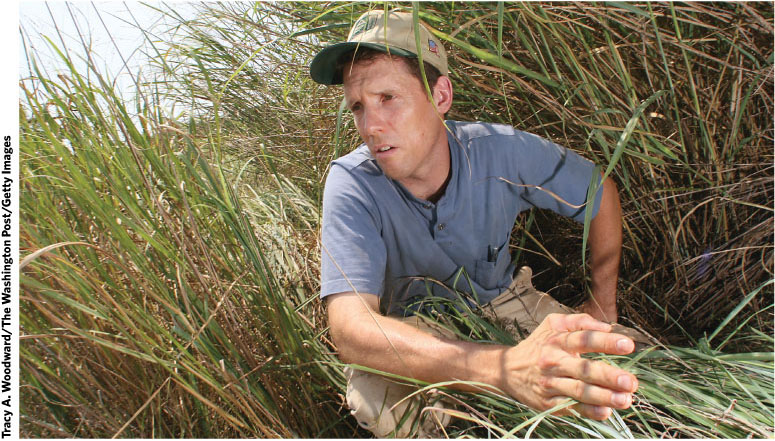There are many reasons biofuels have not solved our dependence on fossil fuels.
KEY CONCEPT 32.6
Producing bioethanol from cellulosic feedstocks is more difficult than production from corn or sugarcane, but commercial production has begun.
Despite the hopes of Tilman and others, cellulosic ethanol has been slow to materialize as a competitive fuel. For one, it’s not easy to get the energy out of the plants: While starch from corn is soft, cellulose in grasses is complex and durable, not easily degraded. “There’s a reason we make houses and furniture out of cellulosic material such as wood,” says Mayfield. “It doesn’t like to spontaneously turn into something else.” Several attempts use high temperatures, acid, enzymes, and yeast to tear apart the strong bonds—a slow, expensive, and energy-intensive process that has proven difficult to scale up. INFOGRAPHIC 32.5
Ethanol can be produced from the biological fermentation of any plant material. Food sources like grains and sugarcane are easily broken down by yeast (fermentation), whereas plant material high in cellulose is more challenging to break down and requires stronger chemical reactions. Research is under way to improve the breakdown of cellulose and make the process more efficient.


How is the production of bioethanol from corn similar to and different from cellulosic bioethanol production?
They are similar in that they start from plant materials, require some pretreatment (grind or chop up the feedstock) and use enzymes and yeast to convert the material to ethanol. The main difference is that cellulose is difficult to digest so additional pretreatment is needed to make it easier for the enzymes to work. Lignin is also present in the cellulosic materials and must be separated out.

But the enormous efforts put into research and development are beginning to pay off. In September 2014, a cellulosic ethanol processing facility capable of producing 20 million gallons per year opened in Emmetsburg, Iowa. In a press release, company founder Jeff Broin said, “This is only the start. We are witnessing what I believe is the foundation of what will be a complete transformation of our energy supply and our economy.” A month later, the world’s largest commercial cellulosic ethanol facility opened in Kansas, with a goal of producing 25 million gallons per year. An even larger facility, also in Iowa, is expected to go online early in 2015.
Algae, too, is taking some time to scale up. It’s relatively easy to convert algae to diesel fuel, Mayfield says, but building the infrastructure to do this on a large scale—such as massive ponds—delays progress. He predicts that algae will become widely used as a biofuel source before switchgrass, however, simply because it has a bigger customer: the military, which can pay a premium for renewable diesel to fly its jets. Furthermore, there already is a major source of ethanol—corn.